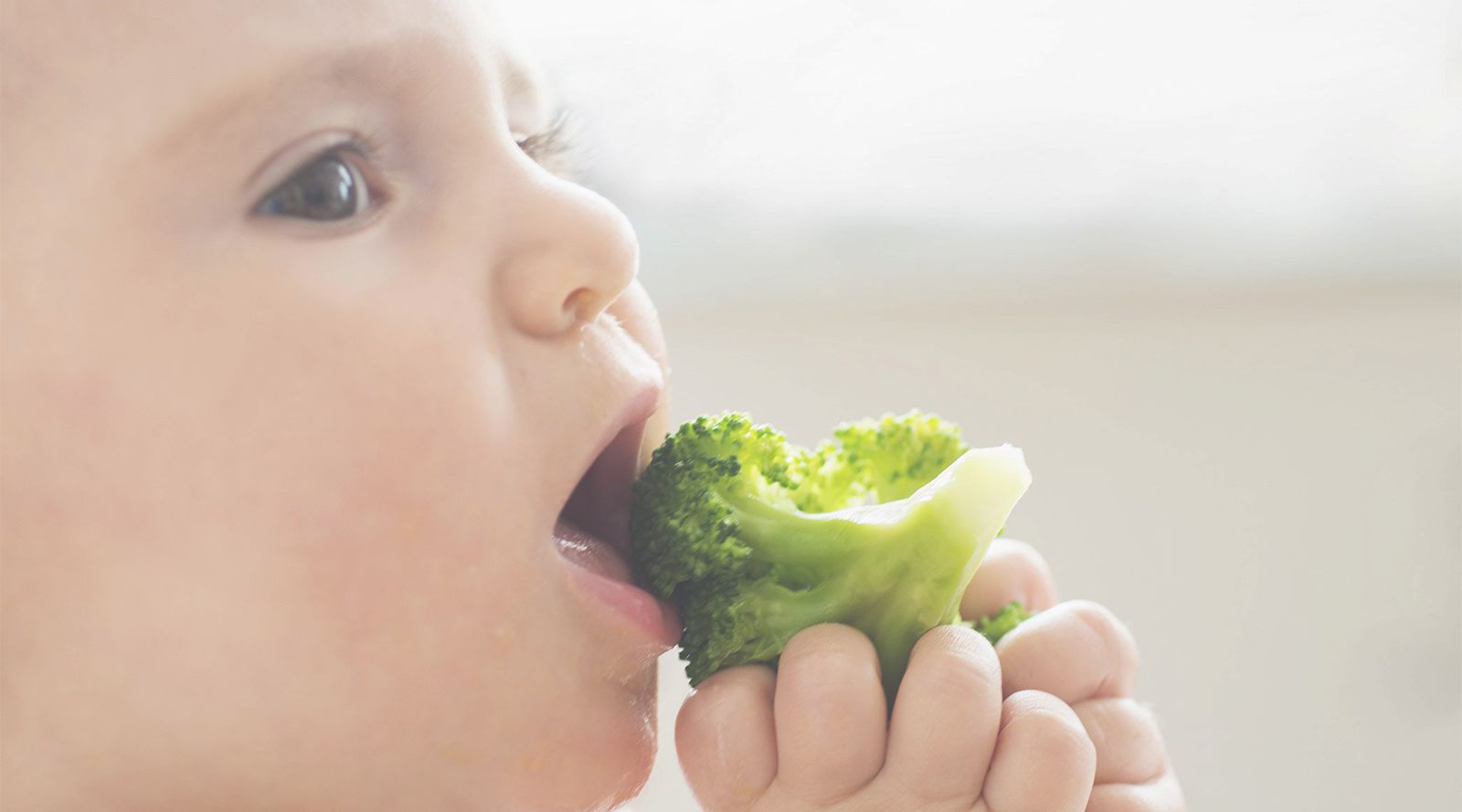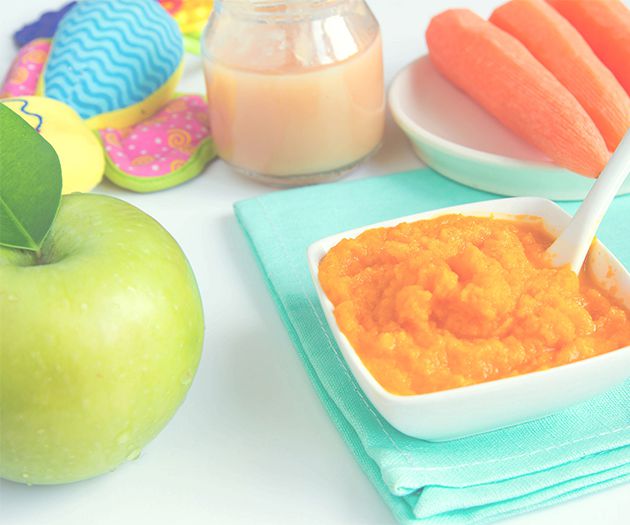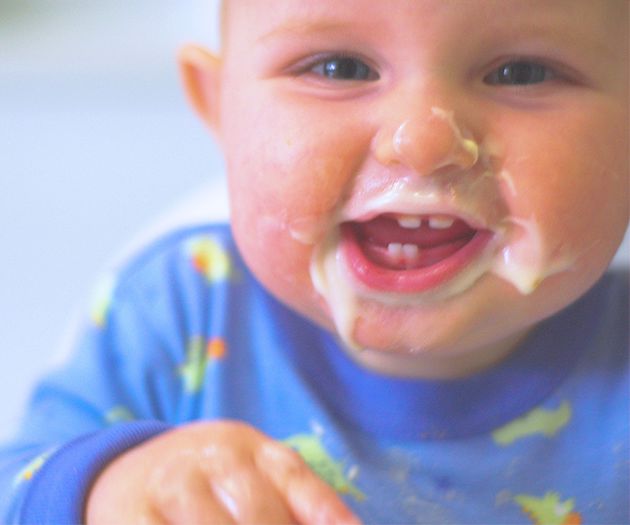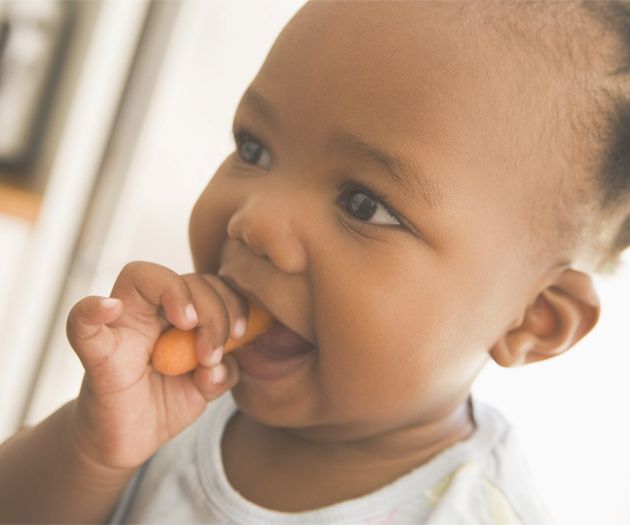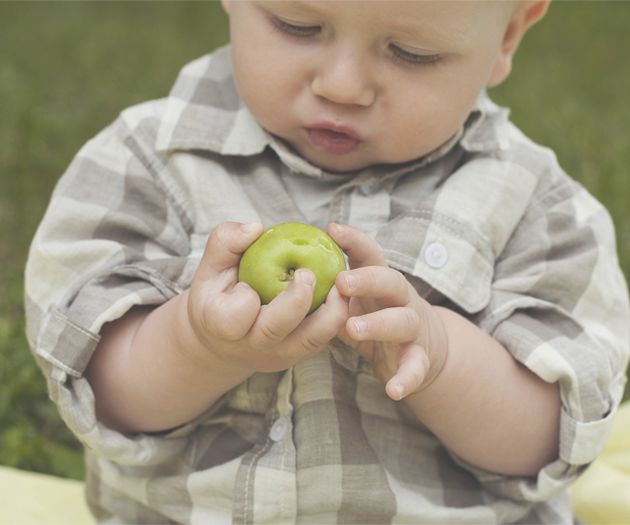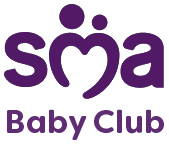At a glance
Introduce single flavours so your baby learns each vegetable’s taste and you can note any reactions
Wean with vegetables first to help set up healthy food habits for life
It can take up to eight attempts for your baby to accept a new flavour so don’t give up
Go at your baby’s pace and stop when they’ve had enough
When to start weaning
There are mixed views on when to start weaning – some say five months, some say earlier, but the HSE recommends that you start with stage one weaning at around six months and definitely no earlier than 17 weeks. This is because baby needs time to develop before they can digest solids.
For that first taste of solids, pick a time when your baby isn’t tired and you’re not in a rush. Begin with simple vegetables like pureed sweet potato or carrot and try to feed before their usual milk. Weaning with vegetables exclusively (no fruit) for the first two weeks gives the best chance for healthy eating habits to develop in later life.
It may take a while for your baby to get used to taking food from a spoon, so give them time and try following these simple steps:
- Your baby is hungrier and more alert first thing, so it’s a good time for new foods.
- Sit baby upright in a highchair with no distractions, like TV, mobiles or tablets.
- If baby seems really hungry give them a little of their usual milk first to relax them and take the edge off their hunger.
- Serve food lukewarm or at room temperature.
- Try one new food at a time to begin with. You can combine flavours after a couple of weeks.
- Give them a round of applause for trying something new. Lots of praise will make mealtimes a positive experience.
How to tell if baby is hungry
Responsive feeding is all about letting baby tell you whether they’ve had enough to eat or not. You’ll soon get to know your baby’s unique signals, but here are some typical cues to look out for:
‘I’m hungry’
- Leaning forward
- Opening mouth
- Crying and fussing
‘I’m full’
- Getting distracted by other things
- Slowing down eating or falling asleep
- Turning head away
- Playing with food
- Throwing food on the floor
A few other weaning tips for stage 1
- At six months your baby’s tummy is tiny and there’s only so much food they can fit in. However, they’re growing fast so make sure they get enough calories by giving full-fat versions of milk and dairy products.
- Go easy on fibre. Yes, it’s good, but at this age it’ll bulk out in that little tum so there’s less room for more nutritious food. It’s best to limit the amount of fibre in their first weaning foods, at least until they’re a bit older.
- If they’re not interested in finishing all their dinner, don’t force it, their tummy might be full. Or baby could be taking time to get used to this new dining experience.
- If you and baby are chomping at the bit and you’re wondering what you need to get started, check out these weaning supplies using our Mother of all Checklists app.
Why are vegetables stage 1 weaning foods?
Long-term observational studies have highlighted this ‘window of opportunity’ to influence your baby’s food preferences and help them develop healthy eating habits into adulthood. Weaning with vegetables first means a child is more likely to enjoy them than if they are introduced later. We’re all born with an innate preference for sweet flavours so, when it comes to veg, try foods like carrot first before the more exotic flavours of spinach or broccoli.
How to wean with vegetables first
- Try to introduce a new single ‘bitter’ vegetable every day, e.g. broccoli, parsnip, beetroot, courgette, asparagus, and kale for one week. Then repeat this process for the second week.
- If you’re exclusively breastfeeding, also introduce beans and pulses, such as chickpeas or lentils to provide iron.
- Don’t be disheartened if your baby initially rejects the vegetable. It’s not that they don’t like it, they’re just often surprised when being introduced to new flavours. It can take up to eight attempts for your baby to get used to a new flavour, so don’t give up.
- Try not to add anything to the vegetables, they are tasty on their own. No salt or sugar either, as these are not recommended for babies.
After two weeks of stage 1 weaning you’re ready to move on to stage 2
The role of milk
At stage one of weaning baby is eating very small portions, so they still need nutrients from milk.
If your baby is over six months and you want to move on from breast milk, SMA® Follow-on Milk is specially designed to complement the weaning diet and is fortified with nutrients such as iron, vitamin D, calcium and Omega 3 & 6†.
HSE recommends giving your baby vitamin D3 drops every day from birth to 12 months if they are breastfed or having less than 300mls of infant formula a day.
†beneficial effect of essential fatty acids is obtained with a daily intake of 10 g of linoleic acid and 2 g of α-linolenic acid.
From bottle to beaker
Gradually replace bottles with cups over a few days. Try to ensure that your baby only uses beakers or cups by the time they are 12 months old. This is important for helping to prevent tooth decay but also important for orthodontic reasons as baby’s sucking reflex should be allowed to naturally evolve towards conventional swallowing.
Aside from milk, water is best. If you are giving any fruit juice, try to keep it very diluted (one part juice to ten parts water) at mealtimes. Encourage them to drink throughout the day, and if possible in an upright position in order to support good drinking habits.
How can I feed my baby when eating out?
As you become more confident with feeding your baby, you might want to enjoy family time out and about. How about a picnic? There’s a lot less to clean up compared to indoor meals. Here’s a few tips for stress-free stage 1 weaning meals on the go:
- Plan the day before. Shop for food, lay out clothes and pack a bag, so you can have a leisurely start and set off relaxed.
- Prepare your own picnic so your baby gets only nutritious foods, while you might like a few ‘advanced level’ foods (or treats).
- Keep food fresh by using an insulated bag with a freezer pack.
- Babies drop spoons on a regular basis, so pack spares.
- Bring a change of clothes as well as lots of wipes and kitchen roll in case it gets messy. Good thing your pram makes an excellent trolley too.
- 200ml SMA® Follow-on Milk cartons are ready to use and convenient for when you’re out and about with your thirsty little person.
IMPORTANT NOTICE:
We believe that breastfeeding is the ideal nutritional start for babies and we fully support the World Health Organization’s recommendation of exclusive breastfeeding for the first six months of life followed by the introduction of adequate nutritious complementary foods along with continued breastfeeding up to two years of age. We also recognise that breastfeeding is not always an option for parents. We recommend that you speak to your healthcare professional about how to feed your baby and seek advice on when to introduce complementary feeding. If you choose not to breastfeed, please remember that such a decision can be difficult to reverse and has social and financial implications. Introducing partial bottle-feeding will reduce the supply of breast milk. SMA® Follow-on Milk is only suitable for babies over 6 months as part of a mixed diet. It should not be used as a substitute for breast milk during the first 6 months. The decision to start weaning or to use this product before 6 months, should be made only on the advice of a doctor, midwife, health visitor, public health nurse, dietitian or pharmacist, based on baby’s individual needs.



